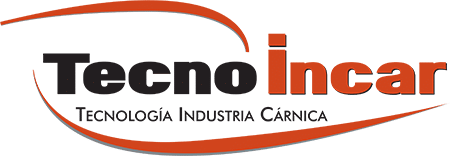In a Cutting Room, each station must adhere to strict safety and sanitary standards to ensure that the butchering process is safe and efficient.
In this article, we will delve into each of the positions in a Cutting Room, detailing their responsibilities, tasks, tools, equipment, and safety regulations.
Primary Cutting Station
Responsibility: Disassemble whole animal carcasses into larger, more manageable cuts. This is the first step in the butchering process and sets the foundation for subsequent cuts.
Tasks:
– Receiving and preparation: Inspect incoming meat to ensure it meets quality standards.
– Carcass cutting: Use saws and knives to separate the carcass into main sections, such as forequarters and hindquarters.
– Part separation: Divide the main parts into more specific cuts, such as ribs and loins.
Equipment and tools:
– Meat saw: Band saws or chainsaws to cut through bone and meat.
– Large knives: Sturdy butchering knives for cutting meat and separating parts.
– Hooks and steel hooks: For handling heavy carcasses.
Safety Regulations:
– Mandatory use of personal protective equipment (PPE), such as cut-resistant gloves and protective aprons.
– Regular maintenance and sharpening of knives to prevent accidents.
– Training in safe handling techniques for heavy tools.
f you haven’t read the Complete Guide to Creating a Cutting Room yet, click here.
Secondary Cutting Station
Responsibility: Refine the primary cuts into smaller pieces, tailored to specific orders or presentation standards.
Tsaks:
– Division of large cuts: Cut large pieces into smaller portions, such as steaks, chops, or stew pieces.
– Deboning: Remove unwanted bones and clean excess fat or connective tissue.
Equipment and Tools
– Precision knives: Smaller, sharper knives for detailed cuts.
– Cutting machines: Automatic or manual cutters to achieve uniform cuts.
– Bone saw: To cut through bones more efficiently.
Safety Regulations:
– Regular checks of knife and tool conditions.
– Proper knife handling practices to avoid injuries.
– Training in the use of automatic cutting machines to prevent accidents.
Portion Preparation Station
Responsibility: Prepare and package the final meat portions, ensuring they meet specific size and quality standards.
Tasks:
– Portion cutting: Divide the meat into specific sizes, such as portions for retail sale or packaging for distribution.
– Additional deboning: Remove any remaining bones if necessary.
– Packaging: Prepare the meat for storage or sale using vacuum-sealing or bubble-wrapping techniques.
Equipment and Tools:
– Precision and packaging knives: For fine, detailed cuts.
– Packaging machine: Equipment to seal the meat in airtight packages.
– Scales: To weigh portions and ensure they meet size standards.
Safety Regulations:
– Maintain clean and organized work areas to prevent accidents.
– Use gloves and hand protection during packaging.
– Ensure compliance with hygiene standards during packaging.
Deboning Station
Responsibility: Remove bones from meat cuts to produce boneless products that can be used in various recipes and products.
Tasks:
– Deboning large pieces: Remove bones from steaks and other cuts.
– Trimming meat: Clean excess connective tissue and fat around the bones.
Equipment and tools:
– Deboning knives: Knives specifically designed for separating meat from bone.
– Pliers and deboning tools: To handle bones and meat.
Safety Regulations:
– Training in deboning techniques to avoid accidents.
– Use of appropriate protective gear, such as metal mesh gloves.
– Maintain proper technique to avoid injuries.
Inspection and Quality Control Station
Responsibility: Verify that all meat cuts meet quality and food safety standards before they reach the consumer.
Tasks:
– Visual inspection: Check the appearance, texture, and color of the meat to ensure there are no signs of spoilage or contamination.
– Size and weight verification: Ensure portions and cuts meet established specifications.
– Record review: Ensure all food safety regulations are met.
Equipment and Tools
– Measuring instruments: To verify the weight and dimensions of the cuts.
– Inspection equipment: Such as magnifying glasses and UV lights to detect contamination or issues.
Safety Regulations:
– Adhere to strict hygiene and quality control protocols.
– Ongoing training in food safety regulations.
– Detailed record-keeping of inspections and controls.
Cleaning and Maintenance Station
Responsibility: Ensure that all work areas and equipment are clean and in good condition to guarantee safety and operational efficiency.
Tasks:
– Surface cleaning: Disinfect work tables, knives, and other equipment.
– Equipment maintenance: Check and maintain tools and machines in good working condition.
– Waste management: Safe disposal of waste.
Safety Regulations:
– Use appropriate cleaning products, following the manufacturer’s instructions.
– Implement detailed cleaning procedures to avoid cross-contamination.
– Use personal protective equipment during cleaning and maintenance.
Each position in a cutting room plays a crucial role in the overall process, and its efficient operation depends on the correct application of techniques, tools, and safety regulations.
Contact Us!
Follow us on our YouTube channel.

